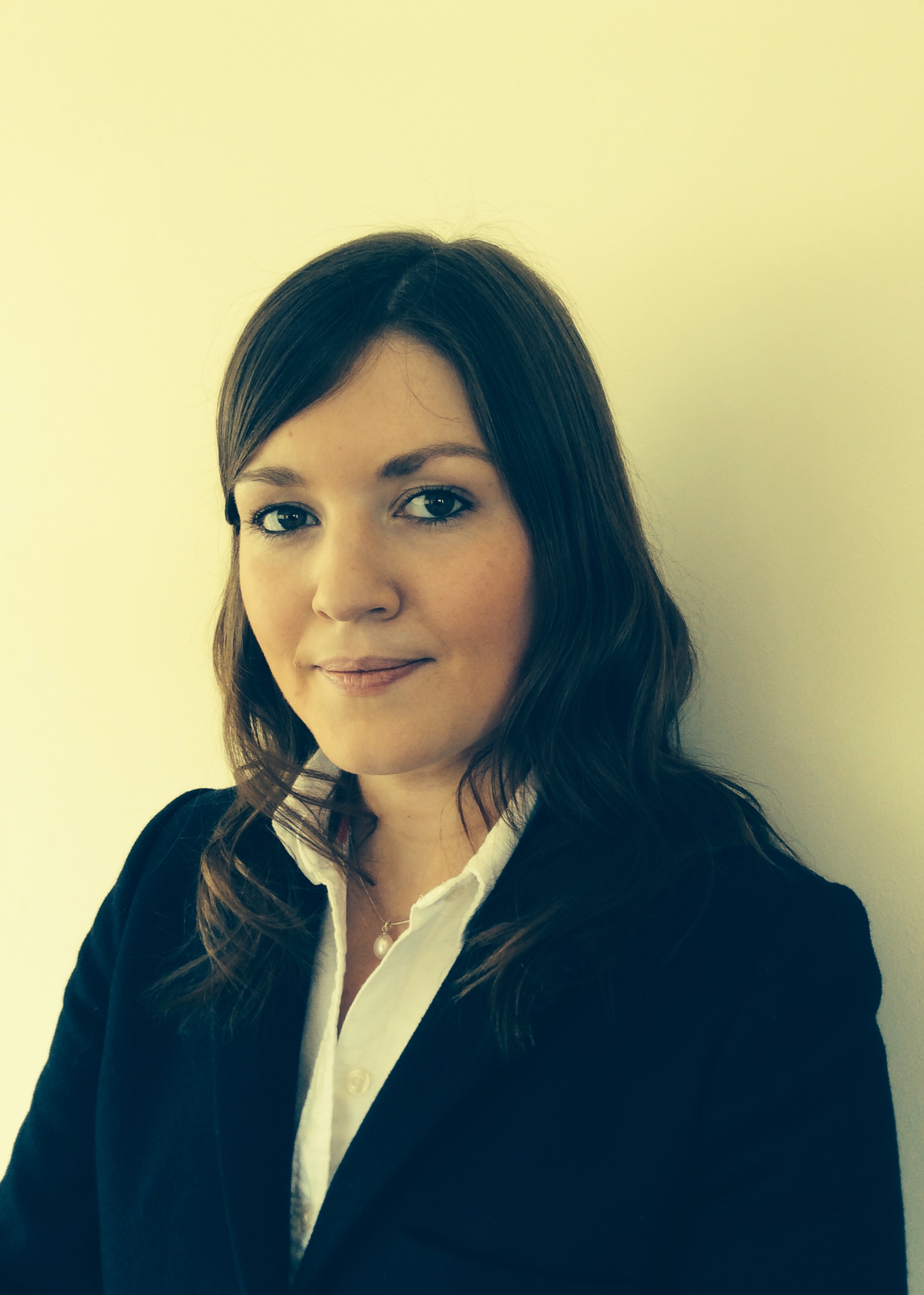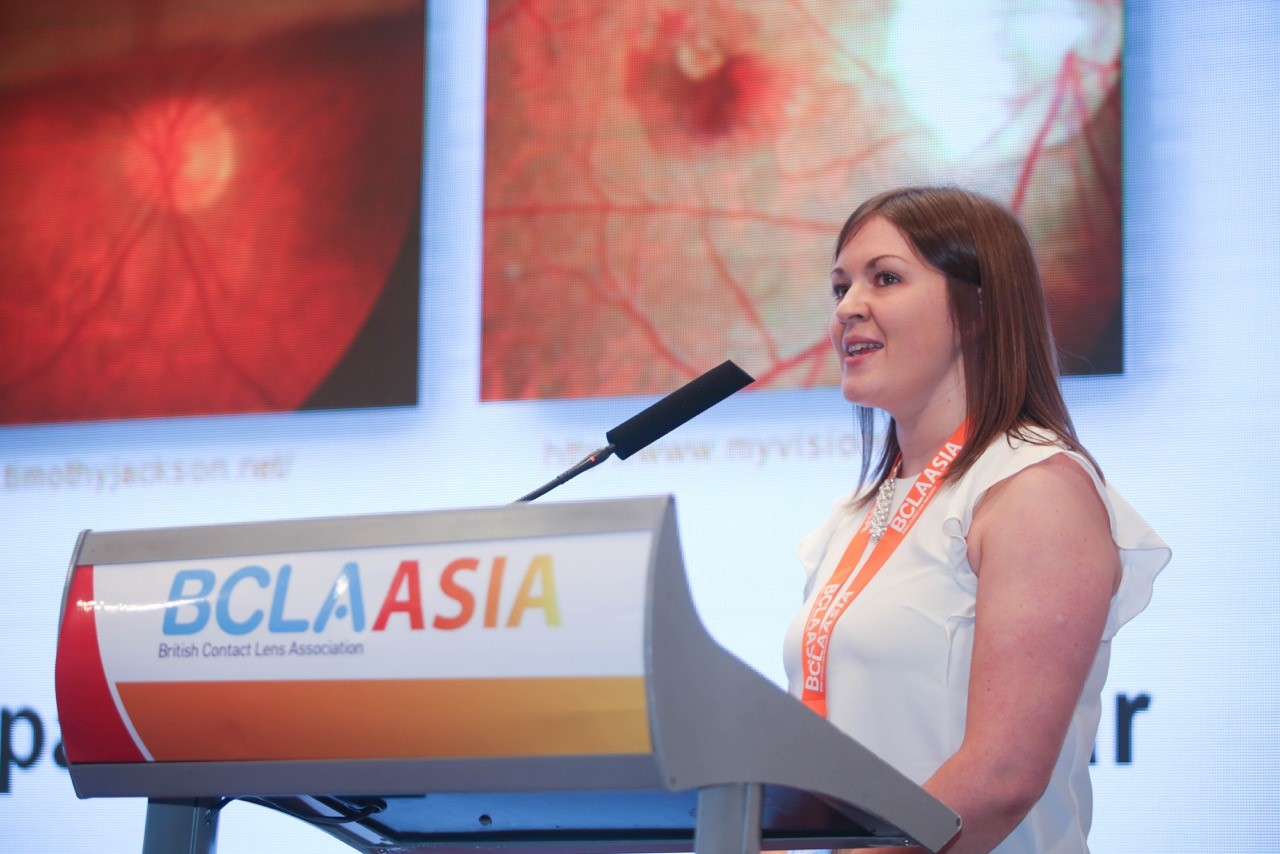BLOG: A day in the life of a BCLA Asia delegate - Janis Orr
For the first time, BCLA branched out overseas to stage its inaugural Asian conference in Hong Kong. Eye care professional Janis Orr was among the delegates and, in this exclusive blog, gives her verdict on an unforgettable two days.
 BCLA Asia 13-14 September 2016
Day 1
BCLA Asia 13-14 September 2016
Day 1
09:00 – 09:30:
The inaugural BCLA Asia Conference was held in the beautiful Cordis Langham Place Hotel in Hong Kong, Asia’s World City.
After a lively welcome address by Helen Eng, President of the Hong Kong Cornea and Contact Lens Society (HKCCLS), and Brian Tompkins, President of the British Contact Lens Association (BCLA), the inaugural BCLA Asia clinical conference was officially underway. This was marked by a spectacular traditional Chinese Dragon Dance.
09:30 – 10:00:
“Putting myopia control into practice.” Kate Gifford (sponsored by CooperVision)
Kate Gifford, an award-winning optometrist, and eminent researcher and educator in the field of contact lenses, binocular vision and myopia control, presented an excellent lecture on myopia management to a packed Shanghai room. Kate outlined the problems associated with myopia and discussed potential management options available. Case studies were used to encourage delegates to think practically about the application of myopia control in their day-to-day practice. Details of available resources were provided in order to support the implementation of myopia control.
11:00 – 12:30:
W2 “Ortho K workshop.” Sander Sterk (sponsored by Menicon)
This fully-booked workshop, held in Shanghai II room, provided delegates with a comprehensive guide on how to correctly fit ortho-k lenses, enthusiastically delivered by Sander Sterk. This superb session emphasised the importance of corneal topography, fitting the lens periphery and controlling the point of touch in relation to ortho-k fitting.
13:30 – 15:00:
Presbyopia Session
“Presbyopia – a Growing Issue and management strategies.” Professor Lu Fan and Professor James Wolffsohn
In this enlightening session, Professor Lu Fan comprehensively outlined the epidemiology of presbyopia and the challenges it presents to optometrists charged with its management. Professor James Wolffsohn then discussed the principles behind presbyopia correction, outlined the wide range of currently available - and future - correction options and their clinical application, including patient selection.
Presbyopia research papers. Professor Michel Guillon
“Ocular surface response to contact lens wear in presbyopia contact lens wearers of Asian descent: effect of lens material.”
Research findings were presented by Professor Michel Guillon relating to the influence of lens material on the ocular surface of Asian presbyopes. Professor Guillon highlighted the importance of material selection when fitting Asian presbyopes with contact lenses.
“Fitting of naïve functional emmetropes with multifocal contact lenses.”
Research findings were presented by Professor Michel Guillon relating to the success rate achieved when fitting neophyte functional emmetropic presbyopes with a daily disposable multifocal. Professor Guillon concluded that, contrary to popular belief, neophyte emmetropic prebyopes can be successfully fitted with a daily disposable multifocal lens.
15:30 – 17:00:
Speciality Lenses Session
“Speciality lenses: Therapeutics.” Lynne Speedwell
and
“Speciality Lenses: Paediatric contact lenses.” Lynne Speedwell
Lynne Speedwell, Head of Optometry at Great Ormond Street Hospital for Children and part-time principal optometrist at Moorfields Eye Hospital, demonstrated her wealth of knowledge and expertise in speciality contact lens fitting. In both of her presentations during this session, she discussed the principles of fitting therapeutic lenses to patients, of all ages, with a range of abnormal ocular conditions. These sessions were extremely beneficial to increase understanding of which types of therapeutic lenses to fit to which patients, and were aided by the effective use of images and case scenarios.
“Speciality Lenses: Worthwhile fitting?” Dr Stan Isaccs
Dr Stan Isaacs presented a convincing, and entertaining, case for the fitting of speciality lenses including soft, RGPs, scleral, semi-scleral and hybrid lenses for irregular corneas and certain corneal conditions. He argued that practitioners should get over their reluctance to fit speciality lenses as they are generally the best options for these patients. He encouraged delegates to embrace available technology, get out of their comfort zone and learn new things.
17:15 onwards:
Welcome Drinks Reception
Day 2
09:00 – 10:30:
Myopia: Epidemiology, Mechanism and Development of Myopia Control Options
“Global prevalence of myopia, high myopia, and temporal trends from 2000 to 2050.” Professor Padmaja Sankaridurg
The ‘myopia management’ day was opened by Professor Padmaja Sankaridurg, a world-renowned researcher, and leader of the myopia program at the Brien Holden Vision Institute. Professor Sankaridurg presented findings of a recent report published be her research in which predictions were made on the future prevalence of myopia worldwide. According to this report, approximately half of the global population will be myopia by 2050; 10% will have high myopia (≥-5DS). These figures set the scene nicely for a day of myopia control discussion.
“Myopia and next generation proteomics.” Dr Thomas Lam Chuen
Professor Thomas Lam Cheun, who is based at the Hong Kong Polytehcnic University, presented some of his fascinating, but complex, research on the novel application of proteomics to myopia and other eye conditions.
“From science to product.” Arthur Back
Arthur Back provided delegates with an interesting insight into the translation of a novel myopia control soft contact lens from research to clinic. Convincing data was presented on the potential for dual focus soft contact lenses to correct myopia refractive error while preventing myopia progression.
11:00 – 12:30:
Myopia control
“A case for defocus incorporated soft contact lens (DISC) – from laboratory to clinic.” Professor To Chi Ho
Professor To Chi Ho, Head of the School of Optometry at Hong Kong Polytechnic University and eminent myopia researcher, discussed the mechanism by which myopic defocus prevents eye growth in animals; and how this could translate to human myopia. He presented research obtained from his lab which shows that, like in animal eyes, human eyes were able to integrate competing and simultaneous myopic and hyperopic defocus, resulting in intermediate eye growth. This is the first study to prove that DISC lenses are able to slow myopia progression and axial elongation in school children, by up to 60%. These lenses could play an important role in the management of myopia in childhood.
“Spectacles for myopia control.” Professor Padmaja Sankaridurg
Following on from her presentation in the first myopia session, Professor Padmaja Sankaridurg made the case for the role of spectacles to prevent myopia progression. She argued that, although research to date does not show that multifocal/novel spectacles are able to slow myopia progression to the same levels as soft contact lenses, orthokeratology and atropine, they could still play a role in reducing progression for some children.
“The case for pharmaceuticals.” Dr Janis Orr

Dr Janis Orr, a lecturer in optometry at Aston University and myopia researcher, made the case for the use of pharmaceuticals for the prevention of myopia progression and axial elongation. She concluded that lose-dose (0.01%) atropine is likely to be the most effective method for myopia control but that there are currently barriers preventing its use; namely commercial availability and uncertainty over the effect of long term use.
13:30 – 15:00:
Myopia control and global attitudes
CooperVision Headline Sponsor Presentation: “Satisfy your patients needs through innovation.” Chi Sing Fan and Gary Orsborn
Chi Sing Fan and Gary Orsborn gave an informative and entertaining headline sponsor presentation on behalf of CooperVision. They conveyed the mission of CooperVision: to fulfil the unique needs of each patient, to help them see better every day and to do this with passion and ingenuity, through innovation.
“Orthokeratology in China.” Professor Xie Pei Ying and Professor Pauline Cho
Professor Xie Pei Ying, Director of the Optometry and Ophthalmology Centre at Peking University, and Professor Pauline Cho, Professor at the Hong Kong Polytechnic University, the immediate past president and founding member of the HKCCLS and world-renowned myopia researcher, adopted a novel question and answer approach during this session. The need for advancement of orthokeratology and its potential benefit was outlined, however, Prof Xie recommended that, if this was adopted in China, there needs to be government control to safeguard patients. The importance of the practitioners’ role was highlighted.
“Myopia Management: Global attitudes/approaches and parental perspectives.” Professor Pauline Cho and Professor James Wolffsohn
The findings of a global survey of over 1000 participants were discussed by Professor James Wolffsohn and Professor Pauline Cho. This survey suggested that, although practitioners were generally aware of the problems associated with myopia, the vast majority of them are reluctant to prescribe anything other than single vision spectacles. The reasons given for their reluctance to engage with myopia control included concerns about safety, efficacy and risk versus benefit. These findings highlight the challenges faced by myopia researchers in transferring their findings to optometric practice. Unless researchers adopt a united front on myopia control, and form some guidelines for practitioners; children will continue to become more myopic, and become exposed to the associated risks of ocular disease.
13:30 – 16:30:
Consensus on Myopia Management. Professor Pauline Cho, Professor James Wolffsohn, Professor Xie Pei Ying, Professor Padmaja Sankaridurg, Professor To Chi-Ho and Dr Janis Orr
This ‘round-table’ session, expertly chaired by Kate Gifford, featured all of the speakers who proposed the cases for methods of myopia control during the previous three myopia sessions throughout the day. A range of insightful, and sometimes provocative, questions were put to the panel by Chair Kate Gifford and delegates in the audience. Although no firm consensus was reached on a definitive myopia control approach was reached, the panel agreed with each other on many areas; and disagreed on others. This gave delegates a real insight to the current state-of-play in myopia control.
16:30 – 17:00:
Closing ceremony
Following the presentation of the new Fellows, closing remarks from Brain Tompkins, and a rather brilliant video sequence, the inaugural BCLA Asia was closed. Thanks must go to the BCLA and the HKCCLS for organising this magnificent event. I look forward to the next one!